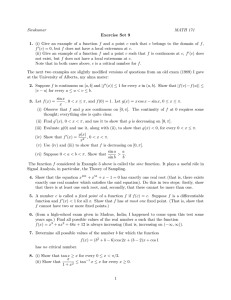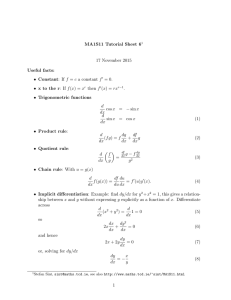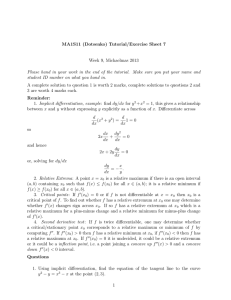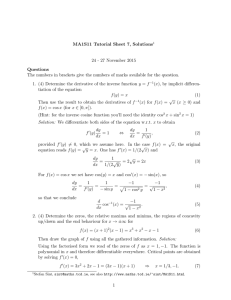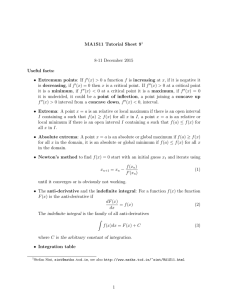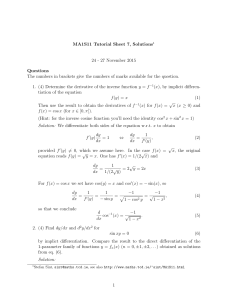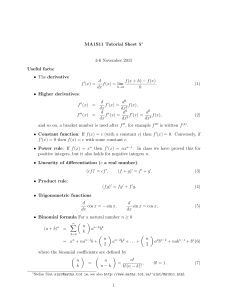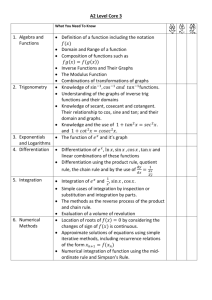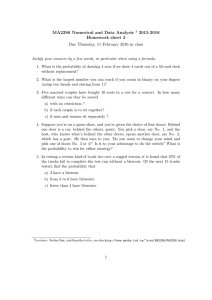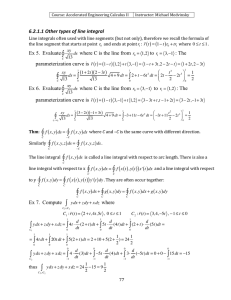MA1S11 Tutorial Sheet 7 24-27 November 2015 Useful facts: • Trigonometric functions
advertisement
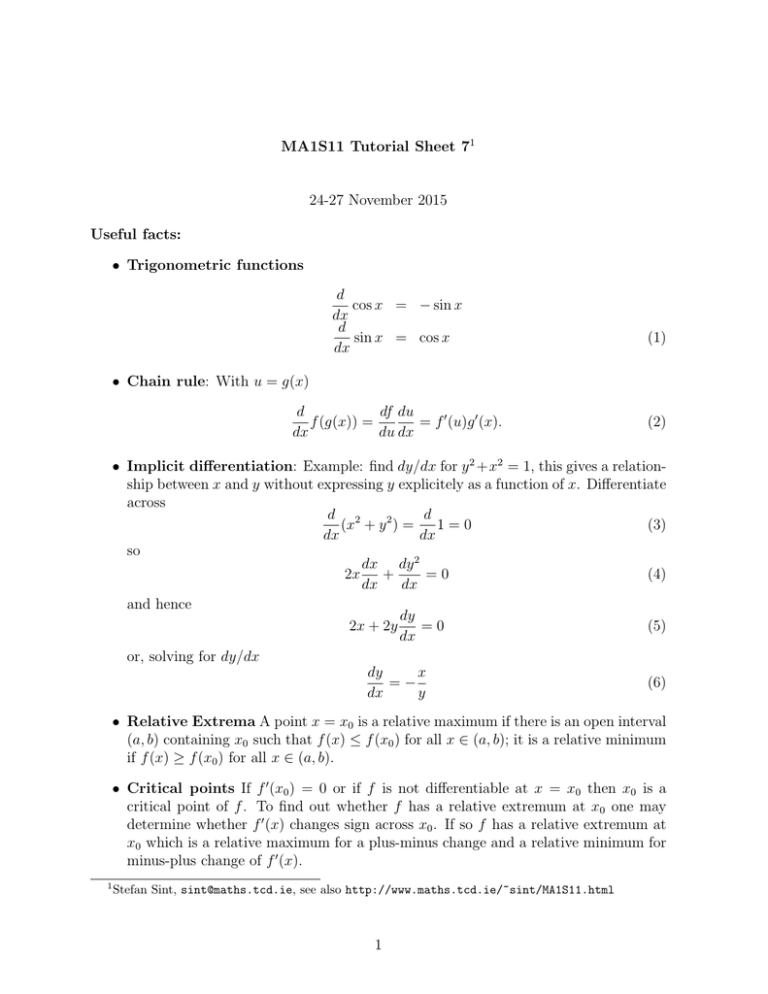
MA1S11 Tutorial Sheet 71 24-27 November 2015 Useful facts: • Trigonometric functions d cos x = − sin x dx d sin x = cos x dx (1) • Chain rule: With u = g(x) df du d f (g(x)) = = f 0 (u)g 0 (x). dx du dx (2) • Implicit differentiation: Example: find dy/dx for y 2 +x2 = 1, this gives a relationship between x and y without expressing y explicitely as a function of x. Differentiate across d d 2 (x + y 2 ) = 1=0 (3) dx dx so dx dy 2 =0 (4) 2x + dx dx and hence dy =0 (5) 2x + 2y dx or, solving for dy/dx dy x =− (6) dx y • Relative Extrema A point x = x0 is a relative maximum if there is an open interval (a, b) containing x0 such that f (x) ≤ f (x0 ) for all x ∈ (a, b); it is a relative minimum if f (x) ≥ f (x0 ) for all x ∈ (a, b). • Critical points If f 0 (x0 ) = 0 or if f is not differentiable at x = x0 then x0 is a critical point of f . To find out whether f has a relative extremum at x0 one may determine whether f 0 (x) changes sign across x0 . If so f has a relative extremum at x0 which is a relative maximum for a plus-minus change and a relative minimum for minus-plus change of f 0 (x). 1 Stefan Sint, sint@maths.tcd.ie, see also http://www.maths.tcd.ie/~sint/MA1S11.html 1 • Second derivative test If f is twice differentiable one may determine whether a critical/stationary point x0 corresponds to a relative maximum or minimum of f by computing f 00 . If f 00 (x0 ) > 0 then f has a relative minimum at x0 , if f 00 (x0 ) < 0 then f has a relative maximum at x0 . If f 00 (x0 ) = 0 it is undecided, it could be a relative extremum or it could be a point of inflection, i.e. a point joining a concave up f 00 (x) > 0 and a concave down f 00 (x) < 0 interval. Questions The numbers in brackets give the numbers of marks available for the question. 1. (4) Determine the derivative of the inverse function y = f −1 (x), by implicit differentiation of the equation f (y) = x (7) √ Then use the result to obtain the derivatives of f −1 (x) for f (x) = x (x ≥ 0) and f (x) = cos x (for x ∈ [0, π]). (Hint: for the inverse cosine function you’ll need the identity cos2 x + sin2 x = 1) 2. (4) Find dy/dx and d2 y/dx2 for sin(xy) = 0 (8) by implict differentiation. Compare the result to the direct differentiation of the 1-parameter family of functions y = fn (x) (n = 0, ±1, ±2, . . .) obtained as solutions from eq. (8). Extra Questions The questions are extra; you don’t need to do them in the tutorial class. 1. Determine the zeros, the relative maxima and minima, the regions of concavity up/down and the end behaviour for x → ±∞ for f (x) = (x + 1)2 (x − 1) = x3 + x2 − x − 1 Then draw the graph of f using all the gathered information. 2 (9)
